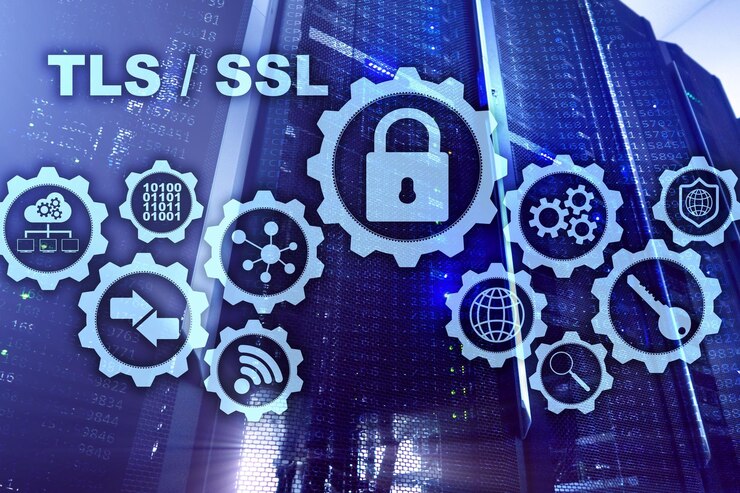SQL Server Integration Services (SSIS) is one of the most powerful tools available for performing data integration, transformation, and migration tasks. Widely used in business intelligence (BI) environments, SSIS helps companies manage large volumes of data and extract valuable insights from them. SSIS 950, or SQL Server Integration Services version 950, refers to a specific version of this tool, commonly associated with SQL Server 2008 R2.
In this article, we will dive deep into SSIS 950, understanding what it is, its core features, and how it compares to other versions. Whether you’re a developer, data professional, or IT manager, this guide will help you get acquainted with this particular SSIS version and how it can streamline your data management processes.
What is SSIS 950?
SSIS 950 refers to the version of SQL Server Integration Services used with SQL Server 2008 R2. SSIS was designed to handle data extraction, transformation, and loading (ETL) tasks, enabling businesses to automate data movement across various systems. With version 950, Microsoft introduced several improvements and changes to the existing SSIS tool, focusing on performance, scalability, and ease of use.
SSIS 950 has been used by organizations to build robust data pipelines that support business intelligence operations, data warehousing, and reporting systems. It allows users to connect to different data sources, clean and transform data, and load it into target systems such as databases, data warehouses, or even cloud storage.
Why Use SSIS 950?
While newer versions of SSIS have been released since SQL Server 2008 R2, SSIS 950 remains relevant in many environments due to its reliability and functionality. It provides a balance between advanced ETL capabilities and straightforward development processes. Companies that rely on SQL Server 2008 R2 still utilize SSIS 950 for several reasons:
- Compatibility: For companies that still operate on SQL Server 2008 R2, SSIS 950 ensures that data migration and ETL processes are fully compatible with the rest of their infrastructure.
- Performance Improvements: SSIS 950 introduced several performance enhancements, particularly in how it manages large datasets and parallel tasks.
- Stability: SSIS 950 is a stable and trusted solution, proven in production environments worldwide.
- Lower Cost: Organizations running older versions of SQL Server may prefer to continue using SSIS 950 instead of upgrading, as upgrading can be costly and time-consuming.
Key Features of SSIS 950
SSIS 950 comes packed with features that allow for efficient and flexible data integration. Let’s explore some of its most notable features:
1. Data Flow Enhancements
- Parallel Execution: SSIS 950 supports parallel execution of tasks, which improves the performance of large data processing workloads. This allows multiple data flows or transformations to run concurrently, making the ETL process faster.
- Memory Buffer Improvements: SSIS 950 introduced better memory management through its data flow architecture, which optimizes the use of system memory during data processing, reducing bottlenecks.
2. Integration with SQL Server 2008 R2
- SSIS 950 was designed to work seamlessly with SQL Server 2008 R2. This means that the ETL tool integrates well with other SQL Server components like SQL Server Analysis Services (SSAS) and SQL Server Reporting Services (SSRS). It also takes advantage of SQL Server’s new features introduced in 2008 R2, such as enhanced data compression and improved indexing.
3. Rich Set of Transformations
- SSIS 950 comes with a variety of built-in data transformations, such as sorting, merging, aggregating, and joining datasets from multiple sources. These transformations are designed to help users clean and prepare their data before loading it into a target system.
4. Advanced Scripting Capabilities
- With the Script Task and Script Component, SSIS 950 allows developers to extend the functionality of data flows by writing custom scripts in C# or VB.NET. This is particularly useful when complex transformations or custom logic is required that cannot be achieved through the built-in components alone.
5. Error Handling and Logging
- SSIS 950 offers comprehensive error handling and logging features. You can configure packages to capture detailed logs, allowing you to track the execution of each component and handle errors when they occur. For instance, rows that fail to load due to data quality issues can be redirected to a separate error handling flow.
How SSIS 950 Differs from Later Versions
Since the release of SSIS 950, newer versions of SQL Server Integration Services have introduced additional features and refinements. Here’s how SSIS 950 stacks up against more recent versions:
1. Control Flow Improvements
- Later SSIS versions, such as SSIS 2012 and beyond, introduced the Project Deployment Model, which simplifies the management of SSIS packages. In SSIS 950, the package-based deployment model was the default, making it more complex to manage multiple packages as part of a larger project.
2. Visual Studio Integration
- Starting with SSIS 2012, Visual Studio became the standard environment for developing SSIS packages, offering better debugging and design tools. SSIS 950, while still compatible with Visual Studio, doesn’t offer as many design-time enhancements compared to later versions.
3. Connection to Cloud Services
- Cloud integration in SSIS has evolved significantly since SSIS 950. Later versions of SSIS offer better support for cloud data sources, such as Azure and Amazon Web Services (AWS). SSIS 950, however, focuses more on on-premises and traditional data sources.
4. Improved Data Flow Components
- While SSIS950 has powerful data flow components, newer versions have introduced more advanced components for working with Big Data, NoSQL databases, and cloud-based environments. For example, SSIS 2017 added connectors for Hadoop and Azure Blob Storage.
Best Practices for Using SSIS 950
Using SSIS950 effectively requires some understanding of how to optimize packages for performance and maintainability. Here are some best practices:
1. Minimize the Use of Script Tasks
- While Script Tasks are powerful, they should be used sparingly. Native SSIS components are optimized for performance, so whenever possible, leverage built-in tasks instead of writing custom scripts.
2. Optimize Data Flow Buffers
- Pay attention to the buffer size settings in your data flow tasks. Properly tuning these settings can lead to significant performance improvements, especially when dealing with large datasets.
3. Implement Logging and Error Handling
- Ensure that logging is enabled for all packages to capture critical execution information. This will make it easier to troubleshoot issues when they arise. Error handling flows should be set up to capture failed records for further investigation.
4. Parallel Execution
- Enable parallel execution where possible to speed up the ETL process. By splitting large datasets and using multiple threads, SSIS950 can process data more efficiently.
The Future of SSIS
While SSIS950 is a powerful tool, newer versions of SQL Server Integration Services offer expanded features and capabilities. As businesses move towards cloud-based infrastructure and more advanced data processing needs, future iterations of SSIS continue to support this transition.
That said, many organizations still rely on SSIS950, especially those that operate within on-premises environments or those with legacy systems that require stability and compatibility.
Conclusion
SQL Server Integration Services (SSIS) version 950 remains a valuable tool for businesses using SQL Server 2008 R2. It provides reliable ETL capabilities, data transformation tools, and integration with other SQL Server components, making it a solid choice for organizations looking to automate data processes. Though newer versions of SSIS have since been released. SSIS950’s stability and performance continue to serve businesses well, particularly those that haven’t transitioned to newer SQL Server versions.
FAQs
- What is SSIS950 used for?
- SSIS950 is used for data extraction, transformation, and loading (ETL) tasks. It helps businesses move data between different systems, clean and transform it, and load it into databases or data warehouses.
- Is SSIS950 compatible with SQL Server 2012 or later?
- SSIS950 is specifically designed for SQL Server 2008 R2. However, packages built in SSIS950 can be upgraded to work with later versions of SQL Server, but certain features may need adjustments.
- Can I use SSIS950 for cloud data integration?
- While SSIS950 can connect to some cloud services. Newer SSIS versions offer much better integration with cloud platforms like Azure and AWS.
- What’s the difference between SSIS950 and SSIS 2012?
- SSIS2012 introduced a Project Deployment Model, which simplified package management. SSIS950 uses a Package Deployment Model, which can be more cumbersome for larger projects.
- How do I upgrade from SSIS950 to a newer version?
- Upgrading from SSIS950 involves migrating your existing packages to a newer version of SQL Server Integration Services. This process often requires updating package components and resolving any deprecated features.











